#learning methods
Text
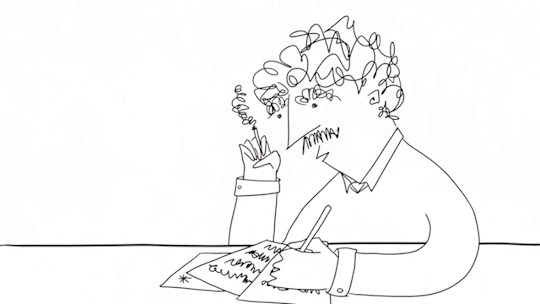
Florilegia is a practice of reading and pondering, of conversing with literature by pulling out the phrases that “sparkle,” removing them from their original context into a new one. Fresh meaning may be discovered in this aggregation of sparklets, their conversation with each other. In new context they may generate new ideas, create questions or beauties or conundrums.
You can do this with a single book, or a year’s worth of reading, or a lifetime’s. You can do it with the same book over and over, gleaning different sparklets each visit.
#food for thought#philosophy#quote#quotes#life lessons#think#human#life#erudition369#methodsandtutorials#learn#learning methods#studying#study method#life long learning#book notes#books & libraries#libraries#sparkle#florilegium#commonplace book#commonplace journal
7 notes
·
View notes
Note
Hello. have a good time. I like your blog and read your posts. I understand that you are a person who is interested in science and research. It's valuable to me that you try to talk about things with knowledge and information. You put time and research into the post you prepare. Thank you for being here and thank you for your interesting posts.
I like reading and studying very much. But when I want to study, my mind goes somewhere else and I get tired quickly. I have a scattered and disorganized mind. I think about trivial things and I can't put them in order. I looked for a solution on YouTube and the Internet and even asked for help from people around me, but I didn't get any results. I have a very important exam coming up that can change my life (I failed this exam last year). You are an educated person. How should a person study to get the best results (especially with my situation)?
Hello Anon thank you for this ask, it means a lot you feel that this is something I can give a good answer on. And it means a lot also you appreciate my being here, I airboat you too Anon 🥰 As someone who is neurodivergent as well (was technically diagnosed with ASD when I was 6 years old), doing things the "typical" way was never going to work. When I was in college is when I started to care a lot more about school than I did in grade school. I don't know how much of my blog you've read but I stated in a couple posts previously that according to the mbti my personality type is ENTP. A big part of this does include I tend to see the big picture side of things and I like to go "backwards" from big picture to details, not vice versa which seems to be typical in classrooms. I always found the building up to the "big picture" method used in school to be quite irritating. With this being said, I'm also a big time visual learner, cause this is a very common dominant learning style with ASD people, and perhaps ADD/ADHD as well as some other neurodivergent conditions.
What ended up helping me on exams was actually taking the diagrams from say PowerPoint slides and putting the notes together onto there via Paint after doing "PRNT SCRN" then paste/holding down CTRL + V at the same time and of course crop/cut out the excess. I believe in consolidation when it comes to notes and everything else. I ain't got the time or patience to go reading through 7 pages of notes with very little visuals involved. Why do that, which is in my opinion highly inefficient, when a few diagrams with the notes attached surrounding the diagram could be way easier to do (and not to mention can cut down the number of pages for notes from 7 to say 3)? You know, help people actually visualize how all this information comes together but then again, what do I know ha ha.
Teachers and professors alike in my opinion teach too much in such a piecemeal, boring fashion and tend to have too linear of an approach to teaching. One of my Anatomy & Physiology professors said something I won't forget when it comes to learning because it is incredibly true. The more senses that are involved in your learning experience, the more your brain retains. That's why I say to consolidate notes with diagrams. Color coding things too, heck even if these diagrams with notes can somehow be accommodated with say an audio track somehow if you do wish to do so... THIS is the ticket in my opinion regardless of whether you're neurodivergent or neurotypical.
You can also check out this Forbes article here talking about learning styles. I also LOVE mnemonic devices, 'cause my short-term memory can be pretty crappy and it seems to favor remembering things when mnemonic devices are involved (ex. Acronyms, acrostics, rhymes and alliterations, chunking, visual images, etc.). For example, when I was in Anatomy & Physiology, to remember the difference between antibodies and antigens, "But Y 1? Because it's 1 antiBodY against 1 antigen") image derived from here. As you can see below, the antibody here is shaped like a Y and the Antigen attaches to the antigen-binding fragment below and how the antigens can be a variety of shapes for say a variety of diseases or some other biological substance.

Also, don't feel bad about taking breaks. Listen to music, play games in between, stupidly scroll online for a short bit, whatever makes you happy. If you're not happy studying, you're not going to do as well in that class overall than if you're enjoying yourself. I'm not sure what you mean by your situation personally but if you mean by a neurodivergent point of view, try what I suggested above.
3 notes
·
View notes
Link
Success in learning is influenced by successful learning methods. You will not get satisfactory study results if you do not use the right learning methods. When you want to learn new, different things, you're bound to come across a different method between studying A and studying B, and of course, this makes it easier for you to learn certain things.
#learners#learning#learning experience#study methods#learning methods#character study#study tips#student#study in uk#study in usa#study in c#canada#study in germany#study aesthetic
17 notes
·
View notes
Text

Cornell Notes Notebook
Are you looking for a notebook that will help you keep learning material in an organized way? Are you fed up with boring covers? If yes, this notebook will be perfect for you. It is designed according to the rules of the Cornell note-taking system. This system helps you organize your notes for future reviews. Each page is decorated with a floral motif to bring uniqueness to the notebook. The cover is stylized on an old book and will stand out among others. Regardless of your level of education, this notebook will be great for better preparation of study material.
#amazon#cornellnotes#notebook#giftideas#school#college#student#notetaking#cornellmethod#cornellsystem#organize#learning#notes#study#remember#fantasy#oldbook#studymaterial#flower#write#subject#topic#learning methods#teacher#back to school#school life#memory#student life#magical#question
1 note
·
View note
Text
Mastering Microlearning: Harnessing Bloom's Taxonomy for Effective Learning

Introduction
In the realm of training, Bloom's Taxonomy stands as a cornerstone framework for designing learning objectives and assessing learning outcomes. With the rise of microlearning – a strategy that delivers small, focused learning units – integrating Bloom's Taxonomy becomes paramount for ensuring that learning experiences are comprehensive and impactful. In this article, we delve into the principles of Bloom's Taxonomy and explore how it can be effectively utilized in the context of microlearning to enhance learning outcomes.
Understanding Bloom's Taxonomy
Developed by educational psychologist Benjamin Bloom in the 1950s, Bloom's Taxonomy classifies learning objectives into six hierarchical levels, organized from simple to complex cognitive processes. These levels are:
Remembering: Recalling information or facts.
Understanding: Grasping the meaning of information.
Applying: Applying knowledge or skills in new situations.
Analyzing: Breaking down information into parts and understanding relationships.
Evaluating: Making judgments based on criteria and standards.
Creating: Generating new ideas, products, or solutions.
Bloom's Taxonomy provides a framework for educators to design learning experiences that foster higher-order thinking skills and promote deep understanding.
Integrating Bloom's Taxonomy into Microlearning
When applied to microlearning, Bloom's Taxonomy serves as a guide for structuring learning content and activities that promote meaningful engagement and learning. Here's how each level of Bloom's Taxonomy can be integrated into microlearning:
Remembering (Recall):
Microlearning modules can include brief quizzes or flashcards to reinforce memorization of key facts or concepts.
Utilize short audio or video clips to recap essential information covered in previous modules.
Understanding (Comprehension):
Present microlearning content in a clear and concise manner, using multimedia elements to enhance comprehension.
Incorporate examples, case studies, or scenarios to help learners grasp the meaning of complex concepts.
Applying (Application):
Include interactive simulations or scenarios that require learners to apply their knowledge to solve practical problems.
Provide real-world examples or case studies that illustrate how concepts can be applied in different contexts.
Analyzing (Analysis):
Break down complex topics into smaller components, with each microlearning module focusing on a specific aspect of analysis.
Encourage learners to compare and contrast different perspectives or approaches to a problem through short activities or discussions.
Evaluating (Evaluation):
Prompt learners to critically evaluate information or arguments presented in microlearning modules.
Include opportunities for peer feedback or self-assessment to encourage reflective thinking and evaluation of one's own learning.
Creating (Creation):
Engage learners in creative activities that allow them to generate new ideas, designs, or solutions.
Encourage learners to collaborate on short projects or assignments that involve creating something tangible or innovative.
Benefits of Using Bloom's Taxonomy in Microlearning
Promotes Higher-Order Thinking: Integrating Bloom's Taxonomy into microlearning encourages learners to engage in higher-order cognitive processes, such as analysis, evaluation, and creation, leading to deeper understanding and critical thinking skills.
Enhances Learning Outcomes: By aligning microlearning activities with Bloom's Taxonomy, educators can design learning experiences that target specific cognitive skills and learning objectives, resulting in more effective learning outcomes.
Facilitates Personalized Learning: Bloom's Taxonomy provides a framework for designing personalized learning paths tailored to individual learner needs and preferences, ensuring that each learner receives content at an appropriate level of complexity.
Encourages Active Engagement: Incorporating diverse activities at different levels of Bloom's Taxonomy promotes active engagement and participation among learners, fostering a dynamic and interactive learning environment.
Provides Clear Progression: Bloom's Taxonomy offers a clear progression of cognitive complexity, allowing learners to scaffold their learning from basic recall to higher-order thinking skills, providing a sense of achievement and progress.
Case Study: Implementing Bloom's Taxonomy in Microlearning
Imagine a corporate training program aimed at improving employees' customer service skills. By integrating Bloom's Taxonomy into microlearning modules, the training program can be structured as follows:
Remembering: Employees recall the key principles of excellent customer service through short quizzes or flashcards.
Understanding: Employees watch brief videos explaining different customer service scenarios and how to respond effectively.
Applying: Employees participate in interactive simulations where they practice handling various customer service situations.
Analyzing: Employees analyze case studies of real customer interactions to identify areas for improvement and best practices.
Evaluating: Employees assess their own performance in customer service scenarios and receive feedback from peers or supervisors.
Creating: Employees collaborate on developing innovative solutions to common customer service challenges and share their ideas through short presentations or discussions.
Conclusion
Integrating Bloom's Taxonomy into microlearning offers a powerful approach to designing effective and engaging learning experiences. By aligning microlearning activities with the cognitive processes outlined in Bloom's Taxonomy, educators can create targeted learning modules that promote deep understanding, critical thinking, and practical application of knowledge. As organizations continue to embrace microlearning as a flexible and efficient training solution, leveraging the principles of Bloom's Taxonomy will be instrumental in maximizing the impact of microlearning initiatives and driving positive learning outcomes.
#bloom's taxonomy#bloomberg's taxonomy#bloom s taxonomy#styles of learners#learning and learning styles#learning skills#different learning styles#learning methods#4 learning styles#skills learning#bloom's taxonomy of learning#levels of bloom's taxonomy#bloom's levels#levels in bloom's taxonomy#bloom's taxonomy in learning#bloom's taxonomy for learning#bloom level taxonomy#bloom's learning#blooms levels#bloom revised taxonomy#blooms taxonomy questioning#learning and learning#learning more#learning about learning#learning modality#learning stages#different methods of learning#skills of a learner#different type of learning styles#different learning modes
0 notes
Text
#AWS#AWS Certifications#All AWS Certifications#Study Methods#How to Study#Learning Methods#How to Learn#Benefits#Japan AWS All Certifications Engineer#Japan AWS Top Engineer
0 notes
Text
youtube
Actually makes very useful points, good method of learning through listening to get onto once I’ve got a bit more vocab behind me
0 notes
Text
Learning styles - Instructors vs Books
I started decluttering my digital space. For whatever reason, I get the sense that I need to do a lot of serious decluttering, both online and physically. I’m guessing I have a lot to make space for in 2024. Lots to look forward t
Image: Canva
While deleting files, I came across some of my notes from Robin Banks’s “Mind Power” and “Shaping Your Destiny” courses that I took in 2020. I had…

View On WordPress
#grounded#groundedafrican#quote#quoteoftheday#declutter#evolving#learning methods#learning styles#Life#Marie Kondo
0 notes
Text
WHAT HAPPENED TO THE ORIGINAL MARCELINE OF THE WINTER KING'S UNIVERSE!? 😨


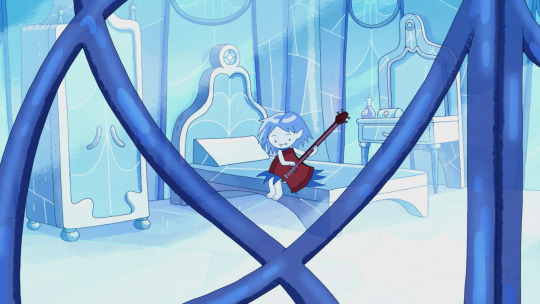
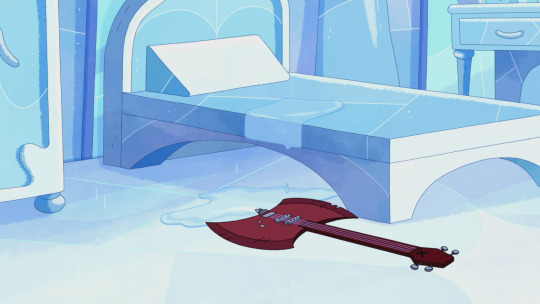
Is the implication that Ice King took her out with all of the other oozers or did the oozers end up killing her?? Either way, it seems that this Simon was not coping well with any of what was going on in his life. Living a life of hypocrisy & ruling a false kingdom.
#is the implication that Ice King took her out with all of the other mutated people?#or did the mutated people end up taking her out?#right as he was talking about making an ice Betty as being 'unethical;' but he had ice Marceline hidden away in his castle#there was nothing ethical about the Winter King's methods; though I'm curious about how he learned to cast a spell to project the madness#of the crown specifically onto this universe's PB?? I wanna know more about that & I wonder if a similar method will be how Fionna & Cake's#reality gets saved? Maybe! 👀#mine#op#marceline abadeer#winter king#marceline the vampire queen#adventure time fionna & cake#adventure time#adventure time fionna and cake#adventure time spoilers#atimers#ice king#ice simon#simon petrikov#fionna and cake
5K notes
·
View notes
Text
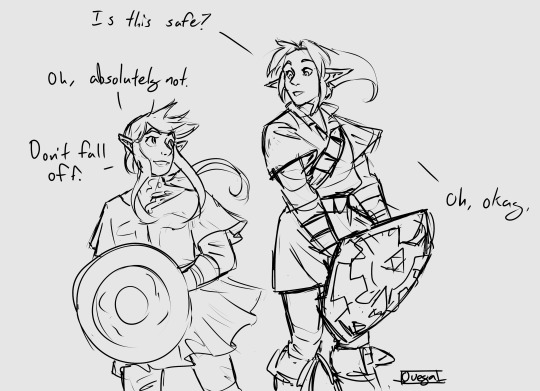





he fits in great
<first / next>
#linked universe#time linked universe#wild linked universe#twilight linked universe#guest starring legend#wilds method of teaching is 'figure it out'#time still has so much to teach twilight#the theme of this comic is learning
5K notes
·
View notes
Text
so i'm readin various stuff on the xray cause this silly film is my current source of joy and
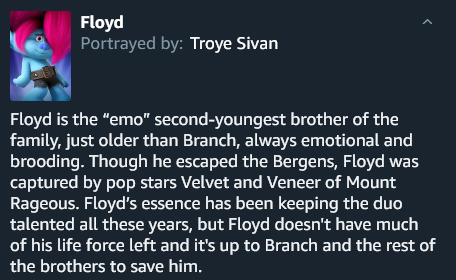
wait

hold up.
what...

WAHT ??? WHAT
XRAY CAST DESCRIPTION????

YEARS???
xrAY dESCRIPTION eXPLaIN!!! WHAT DO YOU MEAN FLOYD WAS HELD CAPTIVE FOR YEARS, WHAT SECRET INFO DO U HAVE ACCESS TO???
#joey babbles#trolls band together#trolls floyd#I. don't know what to do with this random snippet#to be fair -#each description of the brozone bros expands a little bit further than the films do (ex. clay being a prankster) so is this. is this canon?#no? yes? half?#did velvet and veneer have him for years and only recently explode on the scene cause they got like. a big break?#some financial backing? a viral video? spotlight on spotify?#were they just experimenting with the best way to harvest a troll's core and only recently hit the jackpot method?#we never learn how the spritz bottle was made in the first place#my brain is bungled .#y. years....?
626 notes
·
View notes
Text
Whenever people who are entrenched in diet culture talk about how terrible chemicals are, I just want to whip out this:
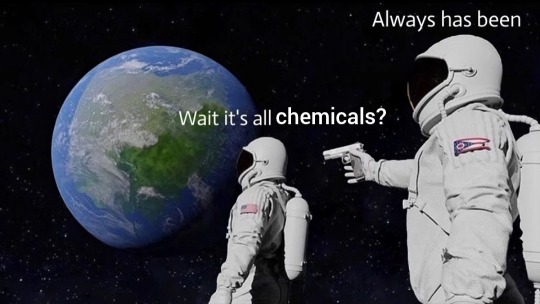
#diet culture#diet culture tw#described images#image description in alt#'it's got CHEMICALS in it' and so do you! and me too! IT'S ALL CHEMICALS ALL THE WAY DOWN#instead of running from this world we must learn to embrace it#i'm not particularly angry at people who say this because it makes me think that they're incredibly invested in diet culture...#...i just don't want the whole 'food = bad' or 'bodies = bad' to go unchallenged...#...part of the reason why diet culture seems just as prevalent now (if not moreso) is partially because it isn't really...#...challenged or questioned without provocation. it's just assumed to be correct because it makes you 'feel in control'#when chemicals are bad you can control what chemicals you consume. it's individualistic and places the blame onto you for 'being good'#it places responsibility onto the person in such a way that it becomes impossible to fulfill#it isn't that i'm upset that people want to treat their bodies in a way they think is responsible...#...moreso that the *way* they go about it ensures that they're stuck in a cycle of self-blame and even self-hatred#because the METHOD is ineffective. not the desire to treat your body well#also the state of ohio looks stupid and i do Not respect it#it looks like a ball that is simultaneously deflated and over-inflated#also their state flag looks silly to me#it looks like the person who was making it fell asleep making it#i'm just clowning on ohio at this point. have never been to ohio but. are you guys okay
983 notes
·
View notes
Text
Seeing, "Zuko is canonically bad at firebending," takes on my dash, so...
Zuko is canonically not bad at firebending. He may not be the natural prodigy that Azula or Iroh are, but skills don't work on a basis of either "extreme prodigy" or "not good at all."
Zuko works hard throughout the series to grow and improve in his firebending, and he does.
He defeats Zhao, an adult firebending master, in an Agni Kai when he's 16 and ostensibly still stuck on the basics, because mastering the fundamentals is a huge part of getting "good" at any skill.
He learns lightning redirection in about a day and later successfully uses it against Ozai, who is meant to be an extremely powerful firebender.
He learns to understand and appreciate his fire on a fundamental level from the dragons, who were the original firebenders, and in so doing he becomes a firebending master just as much as Katara (who had a few days/weeks at most of formal training) or Toph (who declared herself an earthbending master after learning from badgermoles) are masters of their elements.
And then he took everything he had learned about fire and put it together to help Aang master firebending over the course of a few weeks.
None of that says, "canonically bad firebender." It says that Zuko didn't start out as a major natural prodigy like his sister, but he worked hard, never stopped learning and growing, and developed into a very strong and capable firebending master in his own right by the end of the show.
#atla#zuko#zuko meta#just because one person takes a bit longer to learn a skill than the person next to them#or because they aren't *as* strong as The Best person in their field#or because their talents lean towards more niche areas#and/or their learning style doesn't mesh well with traditional methods#doesn't mean that person is doomed to being forever “Bad” at said skill
3K notes
·
View notes
Note
Bird-reptiles is a butterfly-moth situation?
Precisely! These kinds of situations show us how wrong we have been for so long about the relationships among various animals. The pretty little boxes we like to make are often very, very wrong, phylogenetically, i.e., they are not compatible with the *actual* relationships among the organisms.
Here are a few other mind-fucks that have come to light as a result of modern methods being applied to traditional categories that turned out to be wrong:
• Snakes are lizards
• Termites are cockroaches
• Birds belong to lizard-hipped dinosaurs (Saurischia), not the bird-hipped ones (Ornithischia)
• All tetrapods are fish
• Insects are crustaceans
#the more you know#science#phylogeny#taxonomy#I find these kinds of situations hilarious#but also beautiful#they show us just how much we have learned over the last few centuries#many of these revelations simply could not have been interpreted correctly without the light of modern methods#and I think that's beautiful#Who knows what kinds of additional mindfucks await us#Answers by Mark
1K notes
·
View notes
Photo

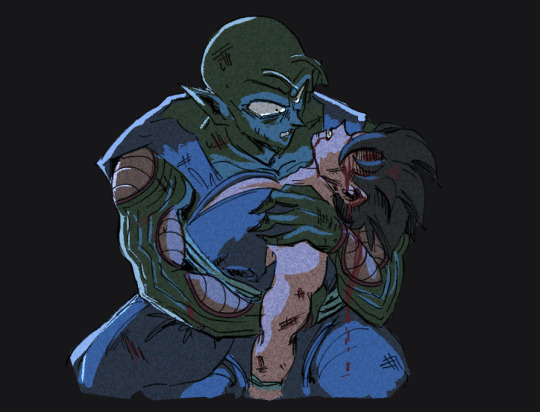
Parallels 👀
(I've noticed that when Piccolo is injured, Gohan sets his gaze on the enemy...but when Gohan is injured, Piccolo sets his gaze on Gohan 🥺)
#dbz#dragon ball z#gohan#son gohan#piccolo#db#dragon ball#sketch#annoys me that the colours on each are not exactly the same#and that's cause i did something stupid on the first drawing: MERGE THE LAYERS THEN SAVE IT#which means when I wanted to go back to the file and use the same method to make a new image#I couldnt parse out what I did to the first image#like what opacity the layers were at and what not#hence they're slightly different#lesson learned!
2K notes
·
View notes